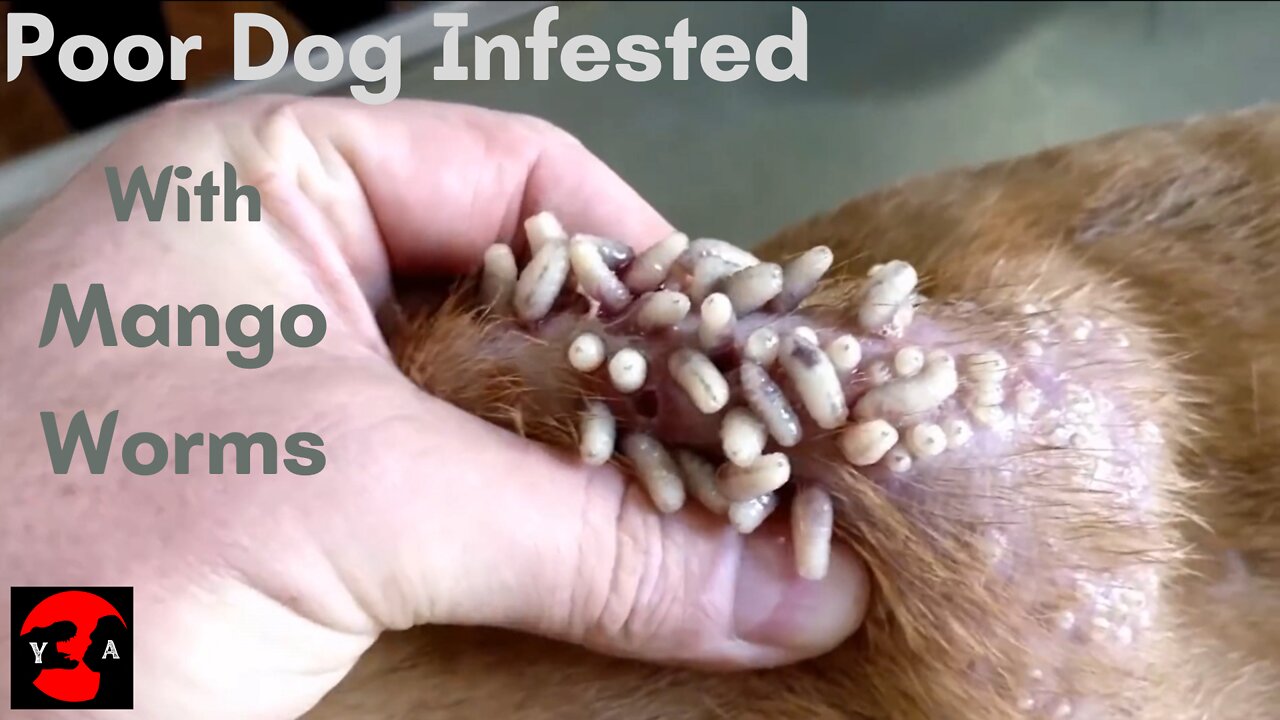Premium Only Content

Poor Dog Infested With Mango Worms!
Mango flies (Cordylobia anthropophaga) are a species of blow fly that’s native to certain parts of Africa, including South Africa and Uganda. These flies have several names, including putsi or putzi fly, skin maggot fly, and tumbu fly.
The larvae of mango flies are parasitic. This means they get under the skin of mammals, including humans, and live there until they’re ready to hatch into maggots. This type of parasitic infestation in a person is called cutaneous myiasis.
Keep reading to learn how to avoid becoming a host to mango fly larvae if you live or travel to parts of the world where they can be found in large numbers.
We’ll also tell you what an infestation looks like and what to do if one or more mango fly eggs get under your skin.
Female mango flies like to lay their eggs in dirt or sand that carries the scent of urine or feces. They may also lay their eggs in the seams of clothing, bedding, towels, and other soft materials that have been left outdoors.
Items that smell of sweat also attract mango flies, but washed clothes can also attract them. Clothing that’s dropped to the ground and laundry that’s being air-dried outside are some examples of places where mango fly eggs may be left.
Mango fly eggs are very tiny. The naked eye usually can’t see them. Once laid, they hatch into larvae, their next stage of growth. This process usually takes around three days.
Larvae from the hatched eggs crawl under the skin and grow
Mango fly larvae can survive without a host for up to two weeks. Once the larvae make contact with a mammalian host, such as a dog, rodent, or person, they painlessly burrow under the skin.
Once under the skin, the larvae feed on subcutaneous, living tissue for two to three weeks as they continue to grow. During this time, a red, solid boil with a hole or tiny black dot on top will form and grow. Each boil contains one maggot worm.
Adult maggots burst out of boils in the skin
As the larvae continue to mature into adult maggots, the boil will start to fill with pus. It may be possible to see or feel the larvae wiggling under the skin during this time.
When larvae are fully matured, they burst out of the skin and fall off. As fully formed maggots, they continue to grow into maggot flies over a three-week period.
-
 LIVE
LIVE
vivafrei
21 hours agoEp. 278: D.C. Peace Wave! Big Tish & Nipple Judge SPANKED! "Maryland Man" Trafficker FREE & MORE?
6,425 watching -
 LIVE
LIVE
Nerdrotic
1 hour agoMysteries of 3I/ATLAS | Forbidden Frontier #113
412 watching -
 11:52
11:52
Exploring With Nug
33 minutes agoWhat’s Hiding Under This Dallas Lake We Found a Vehicle!
654 -
 LIVE
LIVE
Barry Cunningham
6 hours agoBREAKING NEWS: PRESIDENT TRUMP SET TO TAKEOVER CHICAGO AND BOSTON!
2,023 watching -
 LIVE
LIVE
SpartakusLIVE
1 hour agoThe BADDEST Duo in WZ Exhibits PEAK Physique || Duos w/ Sophiesnazz to start, quads later
664 watching -
 LIVE
LIVE
LumpyPotatoX2
1 hour agoSunday Funday on HellDivers - #RumbleGaming
98 watching -
 3:11:52
3:11:52
Esports Awards
4 hours agoEsports Awards: Decade Awards 2025
41.2K3 -
 1:02:58
1:02:58
Sarah Westall
2 hours agoMILITARY WHISTLEBLOWER: How Social Media Military Level Psyops are Manipulating You w/ Patrick Bergy
6.03K3 -
 30:41
30:41
Stephen Gardner
1 hour ago🔥WHITE HOUSE GETS UNEXPECTED BIG WIN!
10.4K10 -
 9:39
9:39
MattMorseTV
3 hours ago $0.31 earnedVance just DROPPED a BOMBSHELL.
10.4K40